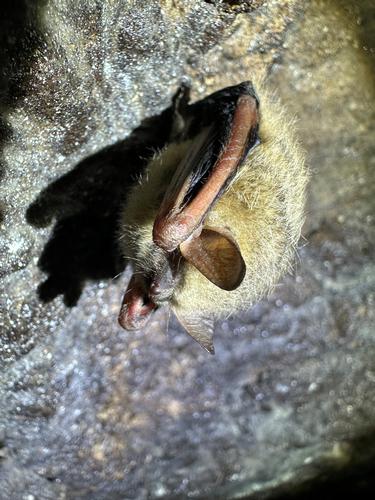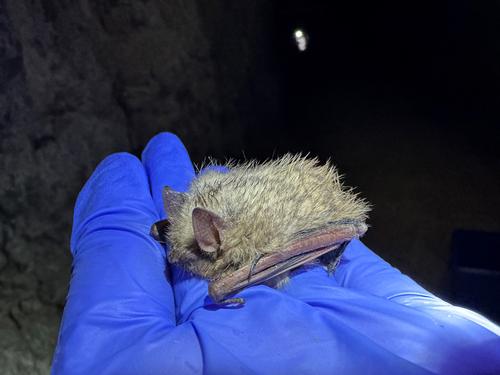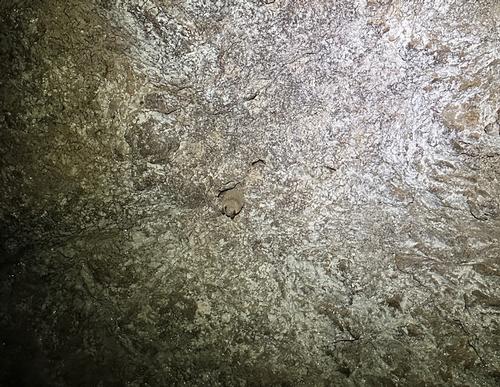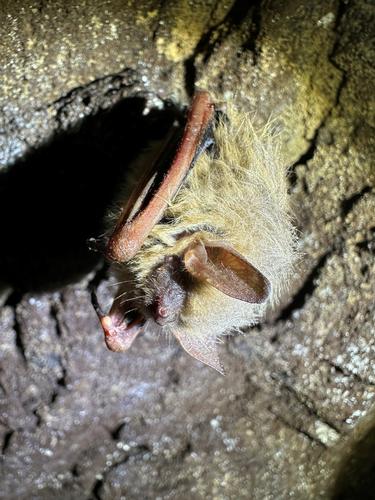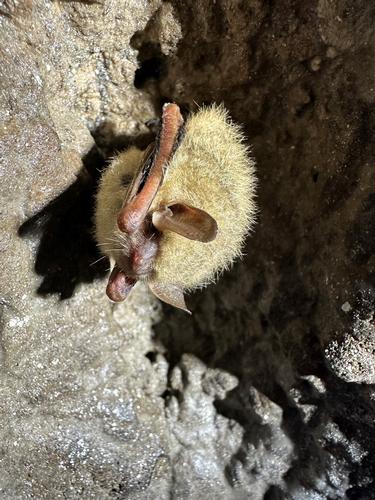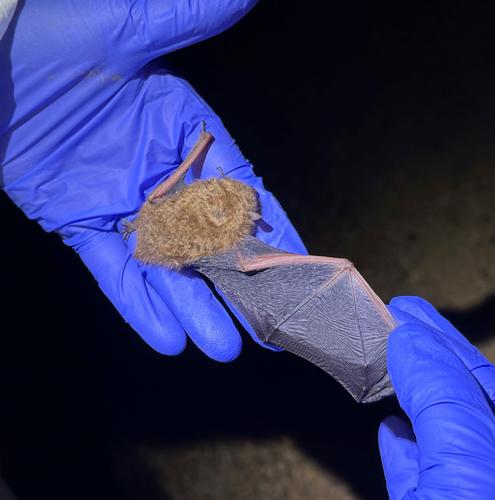Plants and Animals
Perimyotis subflavus Tricolored bat
Key Characteristics
The tricolored bat, formerly known as the eastern pipistrelle, is a small bat (2.8 - 3.2 in/7 - 8 cm long) with golden to reddish brown fur, light brown hairs on the top of the feet, and naked black wing membranes which contrast with the reddish forearm. The individual hairs of its fur are actually tricolored, being dark at the base and tip, but yellow in the middle.
Status and Rank
US Status: No Status/Not Listed
State Status: T - Threatened (legally protected)
Global Rank: G3G4 - Rank is uncertain, ranging from vulnerable to apparently secure
State Rank: S1 - Critically imperiled
Occurrences
| County | Number of Occurrences | Year Last Observed |
|---|---|---|
| Alpena | 1 | 2010 |
| Berrien | 1 | 2005 |
| Calhoun | 1 | 2005 |
| Dickinson | 2 | 2010 |
| Kalamazoo | 1 | 2005 |
| Keweenaw | 3 | 2001 |
| Manistee | 1 | 2007 |
| Ontonagon | 2 | 2011 |
| Ottawa | 1 | 2004 |
Information is summarized from MNFI's database of rare species and community occurrences. Data may not reflect true distribution since much of the state has not been thoroughly surveyed.
Habitat
The tricolored bat is primarily known from the western UP and extreme southwest lower Michigan (Berrien Co.). It hibernates primarily in caves, mines, and deep crevices, but it also has been found hibernating at a hydroelectric facility in Manistee Co. In summer, it forages over the open water of streams and ponds, as well as forest edges. Summer roosts are usually within 30 miles (48 km) of hibernacula and may include buildings, tree hollows, and bridges. Tricolored bats can be found in open woods near the edges of water, as well as over water. They are not usually found in open fields, deep forests, or buildings.
Specific Habitat Needs
Edge needed in: Mesic northern forest.
Natural Community Types
For each species, lists of natural communities were derived from review of the nearly 6,500 element occurrences in the MNFI database, in addition to herbarium label data for some taxa. In most cases, at least one specimen record exists for each listed natural community. For certain taxa, especially poorly collected or extirpated species of prairie and savanna habitats, natural community lists were derived from inferences from collection sites and habitat preferences in immediately adjacent states (particularly Indiana and Illinois). Natural communities are not listed for those species documented only from altered or ruderal habitats in Michigan, especially for taxa that occur in a variety of habitats outside of the state.
Natural communities are not listed in order of frequency of occurrence, but are rather derived from the full set of natural communities, organized by Ecological Group. In many cases, the general habitat descriptions should provide greater clarity and direction to the surveyor. In future versions of the Rare Species Explorer, we hope to incorporate natural community fidelity ranks for each taxon.
Management Recommendations
Disturbance at hibernacula should be avoided or minimized by gating entrances. Disturbance of summer maternity colonies also should be avoided.
Active Period
Active from first week of April to fourth week of October
Breeding from first week of August to fourth week of October
Parturition from first week of June to first week of July
Survey Methods
This species is among the first to enter hibernation (late July - October) and the last to emerge (April). In summer, it is one of the first species of bats to fly in late afternoon and the last to roost after sunrise. Mist netting surveys would consist of catching tricolored bats at their summer range at or near roost or maternity sites or outside their hibernacula in the fall. Hibernacula surveys would consist of looking for tricolored bats inside suitable hibernation sites during the winter.
Hibernacula surveys
Survey Period: From first week of November to fourth week of March
References
Survey References
- Kunz, T.H., ed. 1988. Ecological and Behavioral Methods for the Study of Bats. Smithsonian Institution Press, Washington D.C. 533pp.
Technical References
- Baker, R.H. 1983. Michigan Mammals. Michigan State University Press, East Lansing.
- Kurta, A. 1995. Mammals of the Great Lakes Region. The University of Michigan Press, Ann Arbor.


